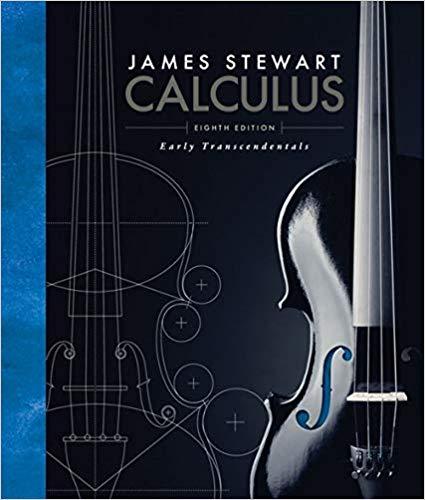
Calculus: Early Transcendentals, 8th Edition
Authors: James Stewart
ISBN-13: 978-1285741550
See our solution for Question 53E from Chapter 2.5 from Stewart's Calculus, 8th Edition.
Problem 53E
Chapter:
Problem:
Use the Intermediate Value Theorem to show that there is a root of the given equation in the specified interval.
Step-by-Step Solution
Given information
We are given with following function:\[{x^4} + x - 3 = 0,\,\,\,\,\left( {1,2} \right)\]We have to use intermediate value theorem to prove that there is a root of the equation in the specified interval.
According to the intermediate value theorem "The function $f$ is continuous on the closed interval [a,b] and let N be any number $f(a)$ and $f(b)$, where, $f\left( a \right) \ne f\left( b \right)$, then there exists a number c in (a,b) such that $f\left( c \right) = N$.
Step 1:
Since the given interval is (1,2), we have \[a = 1,\,\,b = 2\]The function values at left boundary: \[\begin{array}{l}f\left( a \right) = {a^4} + a - 3\\\\f\left( 1 \right) = {1^4} + 1 - 3\\\\f\left( 1 \right) = - 1\, < 0\end{array}\]The function values at right boundary: \[\begin{array}{l}f\left( b \right) = {b^4} + b - 3\\\\f\left( 2 \right) = {2^4} + 2 - 3\\\\f\left( 2 \right) = 15 > 0\end{array}\]
Step 2:
Since the given function is a polynomial, hence it is continuous in the given interval. Moreover, 0 lies between -1 and 15 (between $f(a$) and $f(b)$). Then from intermediate value theorem, there exists a number c in (a,b) such that.\[f\left( c \right) = 0\]Hence the root lies in the interval (1,2).
We are given with following function:\[{x^4} + x - 3 = 0,\,\,\,\,\left( {1,2} \right)\]We have to use intermediate value theorem to prove that there is a root of the equation in the specified interval.
According to the intermediate value theorem "The function $f$ is continuous on the closed interval [a,b] and let N be any number $f(a)$ and $f(b)$, where, $f\left( a \right) \ne f\left( b \right)$, then there exists a number c in (a,b) such that $f\left( c \right) = N$.
Step 1:
Since the given interval is (1,2), we have \[a = 1,\,\,b = 2\]The function values at left boundary: \[\begin{array}{l}f\left( a \right) = {a^4} + a - 3\\\\f\left( 1 \right) = {1^4} + 1 - 3\\\\f\left( 1 \right) = - 1\, < 0\end{array}\]The function values at right boundary: \[\begin{array}{l}f\left( b \right) = {b^4} + b - 3\\\\f\left( 2 \right) = {2^4} + 2 - 3\\\\f\left( 2 \right) = 15 > 0\end{array}\]
Step 2:
Since the given function is a polynomial, hence it is continuous in the given interval. Moreover, 0 lies between -1 and 15 (between $f(a$) and $f(b)$). Then from intermediate value theorem, there exists a number c in (a,b) such that.\[f\left( c \right) = 0\]Hence the root lies in the interval (1,2).